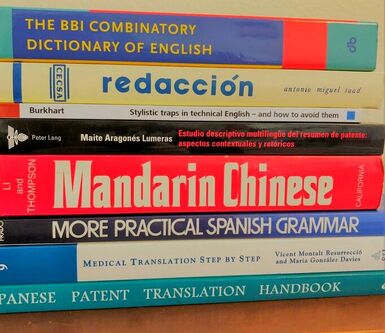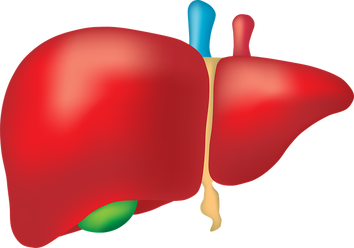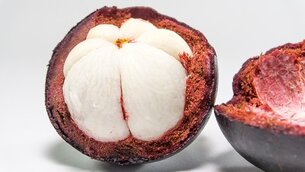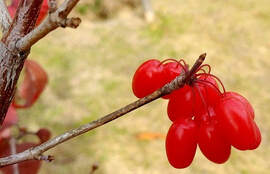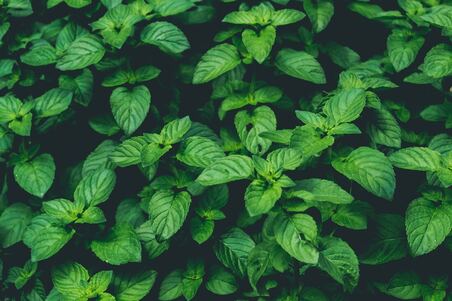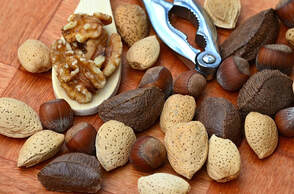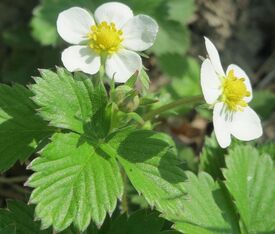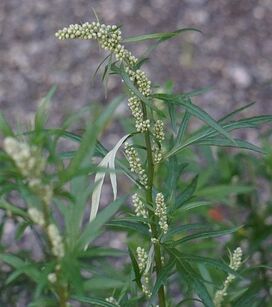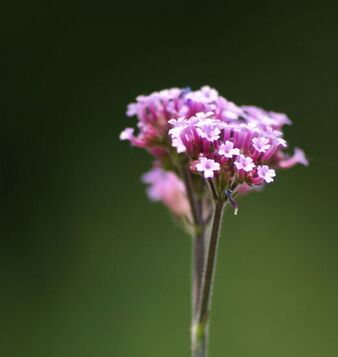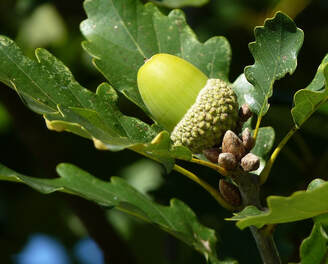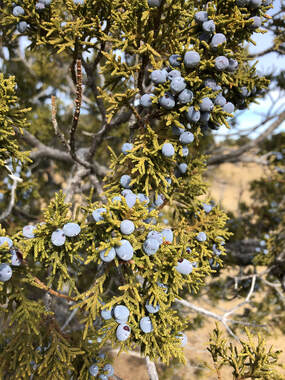|
Tips and advice on where to find a qualified professional translator for your business needs. A translator works with the written word and an interpreter works with the spoken word. Do you have a document requiring translation or do you need to schedule an interpreter for a court hearing, business negotiation, or medical appointment? Here's some advice on how to find a professional translator or interpreter. RECOMMENDATIONS Ask a trusted colleague in your industry for a referral to a translator or interpreter they work with regularly. If you know a qualified Spanish translator but need to have a document translated into French, ask the Spanish translator for a referral. Translators often network with one another and asking for a recommendation is a great place to start when looking for a professional translator. ONLINE SOURCES Search engines Use your preferred search engine to locate the websites of professional translators. Be specific: "English Italian interpreter" deposition "San Francisco" or "Chinese English translator" "journal articles." Professional translators' associations National and local translators' associations operate directories for their members which you can access for free. Here is a partial list of websites with specific links to search for a translator or interpreter.
National association American Translators Association Find a translator or interpreter Regional and local groups Association of Translators and Interpreters of Florida Find a professional Carolina Association of Translators and Interpreters Find a translator/interpreter Colorado Translators Association Directories > Translators and Interpreters Michigan Translators/Interpreters Network Find a Translator/Interpreter New Mexico Translators and Interpreters Association The Directory New York Circle of Translators Find a Linguist Northwest Translators & Interpreters Society Find a language specialist Oregon Society of Translators and Interpreters Find a translator/interpreter HELPFUL GUIDELINES
Still have questions? Contact me at https://www.integrativetranslations.com/ and I will do my best to help. Directory information provided as a public service for those seeking a dedicated professional to assist with translation or interpretation services for a given language. The inclusion of a particular directory does not denote endorsement of the information therein. An individual's inclusion in a particular association directory indicates only that said individual is a current member of the association.
0 Comments
Recent research on the hepatorestorative and hepatoprotective properties of active ingredients in traditional Chinese medicine Active ingredients in herbs from traditional Chinese medicine have shown promising efficacy in rehabilitating and protecting the liver after injury from excess acetaminophen. Drug-induced liver injury A significant number of cases of acute liver failure are caused by acetaminophen, also known as paracetamol. Acetaminophen is not toxic to the liver, but its reactive metabolite may cause liver injury. Excess quantities of acetaminophen can deplete the glutathione needed to convert the toxic metabolite NAPQI into a nontoxic metabolic product. Toxins generated during metabolization, mitochondrial dysfunction, inflammatory response, oxidative stress, the release of damage-associated molecular patterns (DAMPs), autophagy, endoplasmic reticulum stress, and microcirculatory dysfunction are among the mechanisms of injury. Limits of pharmacologic drugs The chief pharmacologic agent used for the clinical treatment of acetaminophen-induced liver injury is N-acetylcysteine (NAC), but NAC has limited treatment results and its administration is time-sensitive. For optimal results, NAC is administered approximately one hour after oral acetaminophen. Protective effects of traditional Chinese medicine A number of active ingredients discovered in Chinese herbs suppress liver toxicity. These compounds vary in how they benefit liver injury: they may alleviate liver disease, mitigate damage to liver tissue, reduce the degree of liver injury, and prevent or ameliorate side effects by suppressing the pathways and mechanisms of liver injury. These active ingredients are fast acting, with notable efficacy and few toxic side effects, and include polyphenol compounds, flavonoid compounds, saponins, organic acids, terpenoid compounds, phenylpropanoids, polysaccharides, and alkaloids. Polyphenol compounds Polyphenol compounds are widely present in traditional Chinese herbal remedies. Polyphenols can affect the production of biomarkers associated with oxidative stress, a major cause of hepatotoxicity induced by acetaminophen overdose. In the research of Hasanein (2017), rosmarinic acid (found in basil, rosemary, and lemon balm) produced remarkable hepatoprotective effects by inhibiting CYP2E1 activity in the liver and lipid peroxidation. Flavonoid compounds The protective effects of flavonoid compounds include the effects of ginseng anthocyanins on acetaminophen-induced hepatotoxicity (Qi 2017) and hyperoside which can hinder the formation of toxic intermediates and boost acetaminophen detoxification in the liver (Xie 2016). Fu (2018) discovered that α-mangostin notably suppressed acetaminophen-induced oxidative stress; α-mangostin, a xanthone derivative found in the pericarp of mangosteen fruit, also reduced inflammatory response through the anti-inflammatory mechanism mediated by the NF-κB and mitogen-activated protein kinase (MAPK) signaling pathways. Lu (2018) demonstrated that licochalcone A isolated from the root of Glycyrrhiza glabra had a protective effect on acetaminophen-induced liver injury through the Nrf2-mediated oxidative stress defense mechanism. Saponins Xu (2017) discovered that the antioxidant, anti-apoptotic, and anti-inflammatory actions of saponins (ginsenosides) had a protective effect on acetaminophen-induced liver injury in mice. Hu (2017) found that ginsenoside Rk1 pretreatment of acetaminophen-induced liver injury in mice significantly lowered levels of the lipid peroxidation product MDA. By increasing Bcl-2 and reducing Bax protein expression, ginsenoside Rk1 impeded activation of the apoptosis pathway. In Ning (2018), ginsenoside Rg1 prevented acetaminophen-induced liver injury through in vivo and in vitro activation of the Nrf2 signaling pathway. Leng (2018) proved that Platycodon grandiflorum saponins had pronounced protective effects on acetaminophen-induced liver injury through the NF-κB and AMPK/PI3K/Akt signaling pathways. Organic acids In Heidari (2016), taurine effectively relieved acetaminophen-induced liver injury and its complications in mice. Jiang (2017) established that, by reducing thiobarbituric acid reactive substances (TBARS) which form as a byproduct of lipid peroxidation and reducing iNOS, COX-2, TNF-2, IL-12, and IL-6, the acids from Potentilla chinensis inhibited inflammation and oxidative stress to alleviate acetaminophen-induced liver injury. Cha (2018) discovered that p-coumaric acid (an abundant isomer of hydroxycinnamic acid widely found in fruits and vegetables) suppressed acetaminophen-induced hepatocyte apoptosis by modulating the MAPK signaling axis in a reactive oxygen species (ROS)-dependent manner and by alleviating response and inflammation from ROS-mediated DNA damage . Terpenoid compounds In Uchida (2017), compounds in the essential oil of Cymbopogon citratus (lemongrass) hindered neutrophil migration and antioxidant activity in mice with acetaminophen-induced liver injury, thus relieving hepatotoxicity. The research of Zhang (2017) proved that by inhibiting the TNF-α-mediated JNK signaling pathway and the phosphorylation ERK and P38 pathways, pretreatment with astaxanthin (natural sources include shrimp, algae, yeast, and salmon) reduced hepatocellular necrosis, blocked the formation of ROS, prevented oxidative stress, and diminished cellular apoptosis, protecting the liver and alleviating drug-induced liver injury. In Yoshioka (2017), kamebakaurin (isolated from Rabdosia excisa) improved hepatotoxicity from acetaminophen overdose by inhibiting lipid peroxidation and inflammatory response in mice. Phenylpropanoids Fructus schisandrae (schisandra fruit) is widely used for liver protection in traditional Chinese medicine and the research of Jiang (2015) proved that lignan components in Fructus schisandrae ameliorated acetaminophen-induced liver injury by inhibiting acetaminophen's CYP-mediated biologic and metabolic pathways. Furthermore, in Jiang (2016) schisandrin B increased liver detoxification and antioxidation by activating the Nrf2/ARE pathway and regulating the Nrf2 target gene, reflecting its hepatoprotective effects. Yan (2018) demonstrated that, by activating sustained autophagy, glycycoumarin relieved acetaminophen-induced oxidative stress and thus prevented liver injury. Polysaccharides Lin (2018) found that polysaccharides of Dendrobium officinale played a hepatoprotective role by lowering oxidative stress and activating the Nrf2-Keap1 signaling pathway. And in Zhao (2018) the anti-inflammatory effects of polysaccharides of Coreopsis tinctoria regulated the expression of apoptosis-related proteins such as Bax and Bcl-2 to prevent acetaminophen-induced hepatotoxicity. Wu (2018) proved that polysaccharides of Poria cocos played a protective role against acetaminophen-induced liver injury in mice and their molecular mechanism was associated with suppression of the hepatocellular inflammatory response and apoptosis. Alkaloids Li (2014) discovered hepatoprotective effects of berberine on liver fibrosis via activation of AMP-activated protein kinase; and Zhao (2018) found that berberine had pronounced prophylactic effects on acetaminophen-induced hepatotoxicity by inhibiting oxidative stress, hepatocellular necrosis, and inflammatory response. In Park (2016), the alkaloids of Aconitum carmichaelii protected the organism against acetaminophen-induced injury by suppressing mitochondrial dysfunction and defending liver cells, although the herb is toxic when taken in excess. In 2018, a trial by Bian confirmed that ligustrazine (an alkaloid isolated from Ligusticum wallichii) improved acetaminophen-induced liver injury in mice by regulating the NF-κF and MAPK signal transduction pathways. Other compounds In Wangkheirakpam (2018), Auricularia delicata demonstrated antimicrobial, antioxidant, and protective effects on acetaminophen-induced liver injury in rats. In Guo (2018), Rhizoma pinelliae extract regulated bile acid transporter protein in mice with acetaminophen-induced liver injury. By activating Nrf2 and inhibiting NF-κB signal transduction, Garcinia cambogia extract played a protective role in acetaminophen-induced liver injury in mice (Ibrahim 2018). The antioxidant, anti-inflammatory, and anti-apoptotic actions of tannic acid demonstrated significant hepatoprotective effects on acetaminophen-induced hepatotoxicity in the work of Zhang (2017). Acetaminophen is a leading cause of drug-induced liver injury and recent research findings indicate that the use of active ingredients from traditional Chinese medicinal herbs might ameliorate such injury. Research on mechanisms of liver injury and the means by which such compounds protect against and alleviate injury holds promise for future antidotes to drug-induced liver injury. Please note: The herb information in this blog is presented for educational purposes only. The use of herbal preparations is not recommended without seeking the advice of a healthcare provider. Substances in herbal preparations may interact with prescription drugs to eliminate therapeutic efficacy or induce toxicity. Contact Integrative Translations for a full list of references. On November 5, 2019, the FDA updated its 2017 safety communication to remind patients, healthcare professionals, and laboratory technicians that levels of biotin or B-7, a B-complex vitamin and a common component of dietary supplements, higher than the recommended daily allowance may interfere with lab test results. Many dietary supplements promoted for hair, skin, and nails contain biotin levels up to 650 times the recommended daily intake of biotin. Physicians may also recommend high levels of biotin for patients with certain conditions such as multiple sclerosis. Biotin levels higher than the recommended daily allowance may cause interference with lab tests. In its most recent update, the FDA reminds the public, healthcare providers, lab personnel, and lab test developers that biotin, often found in dietary supplements, can cause clinically significant incorrect lab test results. The FDA has seen an increase in the number of reported adverse events, including one death, related to biotin interference with lab tests. Incorrect test results may lead to inappropriate patient management or misdiagnosis. Biotin in patient samples can cause falsely high or falsely low results, which may lead to inappropriate patient management or misdiagnosis. For example, a falsely low result for troponin, a clinically important biomarker to aid in the diagnosis of heart attacks, may lead to a missed diagnosis and potentially serious clinical implications. Consumers are advised to tell their doctor if they are taking biotin. Healthcare providers should talk to their patients about any biotin supplements they may be taking. Know that biotin is found in multivitamins – including prenatal multivitamins, biotin supplements, and dietary supplements for hair, skin, and nail growth – at levels that may interfere with lab tests. Lab personnel using assays with biotin technology must educate themselves and others about the potential for biotin interference. The recommended daily allowance of biotin is 0.03 mg and biotin is present in small amounts in many foods including whole grains, eggs, walnuts, avocados, egg yolk, liver, and yeast. Forms for healthcare professionals and patients to report safety information:
https://www.fda.gov/safety/medwatch-fda-safety-information-and-adverse-event-reporting-program/medical-product-safety-information FDA Safety Communication: https://www.fda.gov/medical-devices/safety-communications/update-fda-warns-biotin-may-interfere-lab-tests-fda-safety-communication Under the oaks and evergreens at 7420 feetWILD STRAWBERRY Wild strawberry runs along the trail. Tea of strawberry leaves and stems is valued for its mild astringent effects, and its antirheumatic, diuretic, antidiarrheal, tonic, and laxative properties. Strawberry is recommended in many traditions for intestinal sluggishness and for pregnancy, convalescence, and chronic stomach sensitivity when stronger herbs are contraindicated. WORMWOOD Known variously as 艾叶 (aiye), artemisia, or mugwort, wormwood is an intense bitter that stimulates underactive digestion and aids anemia. An anti-inflammatory and antidepressant, wormwood can be added as a potentiating factor to other preparations. Its active substances include essential oils, sesquiterpene lactones, azulenes, flavonoids, phenolic acids, and lignans. The whole plant is used as an antimalarial. Wormwood herbal tea is administered as a stomach stimulator and orexigenic. In Chinese medicine, wormwood warms the channels and stops bleeding. It dispels cold and alleviates pain, calms the fetus, resolves phlegm, and stops cough and asthma. As an aromatic, wormwood is used in sweat baths and saunas. Wormwood-juniper smudge sticks cleanse spaces and purge negativity. VERBENA The constituents of verbena or 马鞭草 (mabiancao, literally, horsewhip herb) include volatile oils, bitters, iridoids, alkaloids, mucilage, and tannins. It is a restorative, helpful for tension and long-term stress and good for convalescence from a long illness. The entire plant has sedative, tonic, diaphoretic, and anti-inflammatory properties and it is used to treat early-stage depression, melancholia, stress, and fever. Chinese medicine employs the bitter and cool properties of verbena to clear heat and remove toxicity, activate blood, disperse nodules, promote diuresis, and resolve swelling. It is indicated for jaundice caused by damp-heat, for fever due to external pathogens, and for dysmenorrhea or amenorrhea from blood stasis and abdominal masses. Its heat-clearing properties are used for severe sore throat and other accumulations of heat toxin including breast abscesses and swollen and painful gums. Extracts of lemon verbena and its major compound acteoside (ACT) have a regulatory effect on abnormal liver lipid metabolism; furthermore, ACT promotes lipolysis and fatty acid oxidation by increasing messenger RNA expression of adipose triglyceride lipase and carnitine palmitoyltransferase. OAK TREE The leaves, acorns, galls, and branches of oak trees contain tannin, quercetin, gallic acid, pectin, calcium, magnesium, and potassium. In various medical traditions, infusion of oak tree bark is administered internally to treat hemorrhoids, diarrhea, chronic dysentery, intestinal bleeding, and uterine bleeding, and, as a tea astringent, oak is applied externally to skin wounds, burns, mouth inflammation, toothaches, sore throats, and earaches. Oak gall possesses astringent, anti-inflammatory, antiviral, antidiabetic, larvicidal, antibacterial, and gastroprotective effects. Gallnuts have been sourced to produce drug therapies for cancerous diseases in traditional and folk medicine systems through the centuries, and the literature indicates that gallnuts contain a number of bioactive metabolites, accounting for their anticancer effects. Further screening of bioactive compounds is expected to yield valuable anticancer agents. JUNIPER The medicinal evergreen juniper or 杜松子(dusongzi) is resinous and aromatic. Internally, the leaves or berries have been used as a urinary antiseptic and for cystitis and urethritis, although juniper is contraindicated in people with kidney infection or chronic kidney weakness as the oils may be irritating to kidney inflammations. Juniper berries have diaphoretic and emmenagogue properties and the leaves have diuretic properties. In Chinese medicine, juniper works at the heart, spleen, and lung meridians and its key actions and medicinal uses include promoting digestion, warming the middle burner, expelling phlegm, warming the lungs, and cleansing the kidneys and liver. Topically, juniper is used to treat chronic skin irritations and as a relaxant. It relaxes the muscles and removes barriers to blood flow and energetic flow. Juniper is prized in many traditions for its ability to dispel tension and stagnation and the aromatic parts of the juniper plant have been employed as a protector against negativity. Juniper is known to have a stabilizing presence for those in need of safety and protection. Juniper's versatility extends to the culinary world and includes the flavoring of meat and sauerkraut and the distillation of gin. Please note: The herb information in this blog is presented for educational purposes only. The use of herbal preparations is not recommended without seeking the advice of a healthcare provider. Substances in herbal preparations may interact with prescription drugs to eliminate therapeutic efficacy or induce toxicity. |
�
AuthorKerilyn Sappington is the founder of Integrative Translations, which specializes in the Chinese to English translation of topics in conventional and complementary medicine. Archives
August 2022
Tags
All
|

